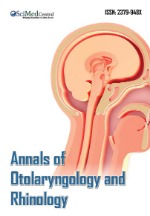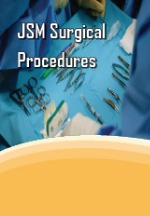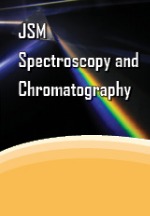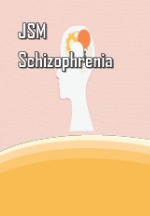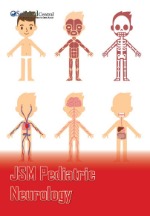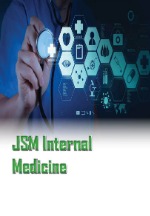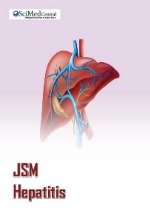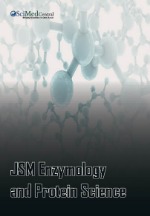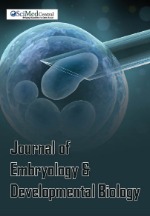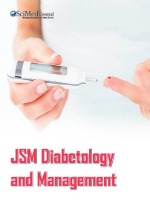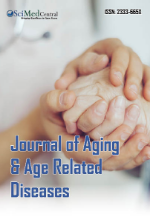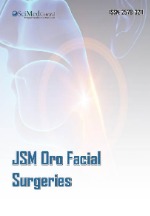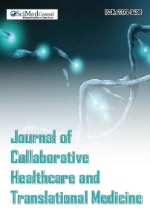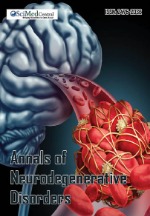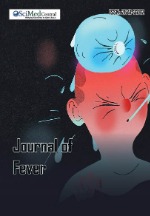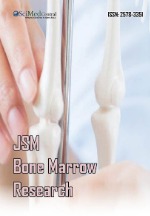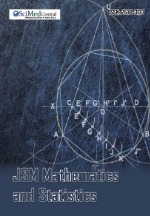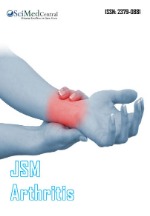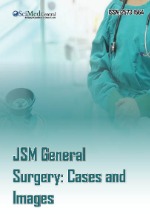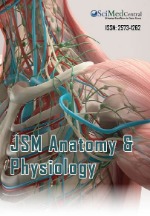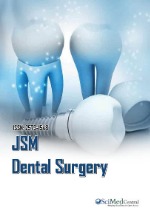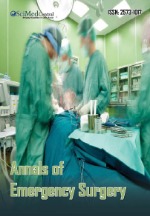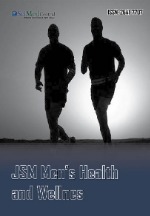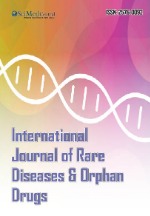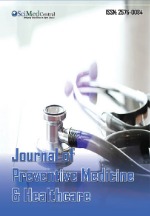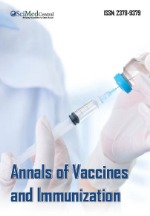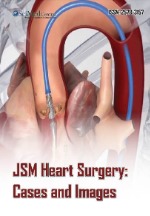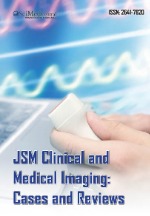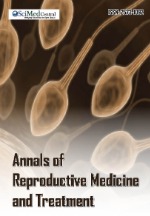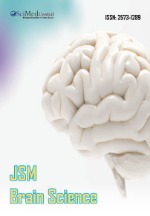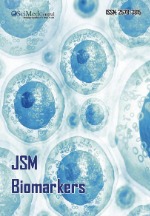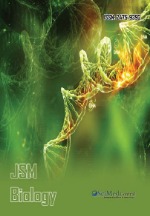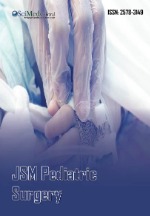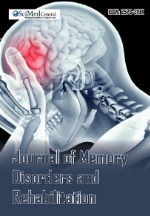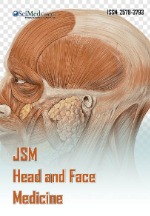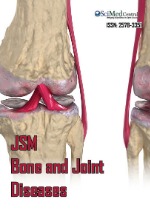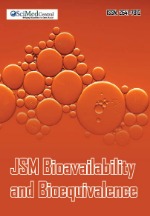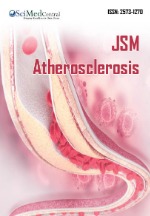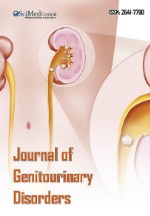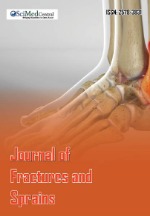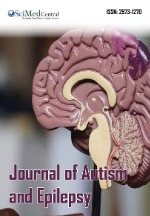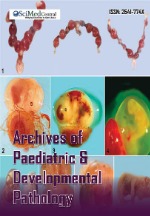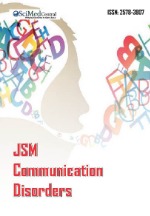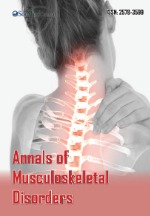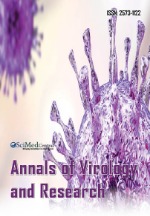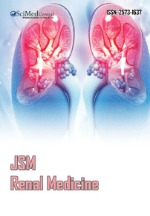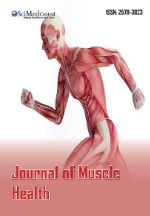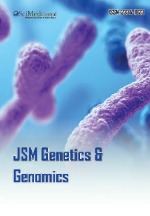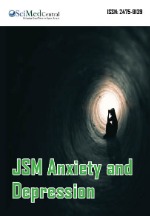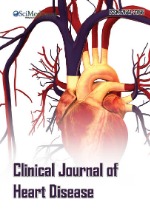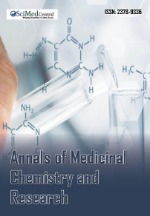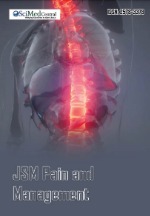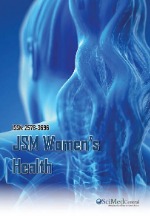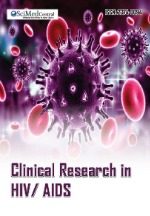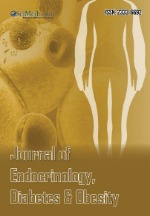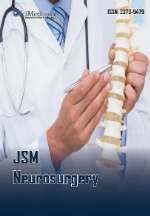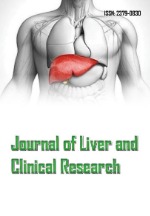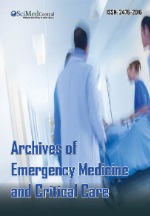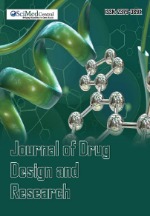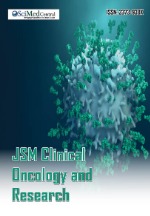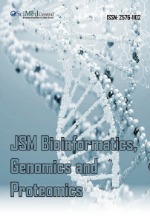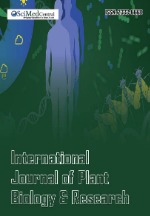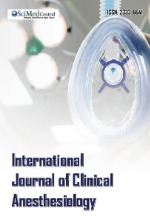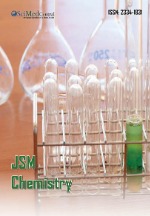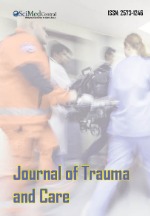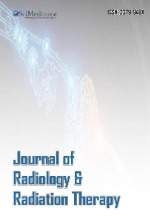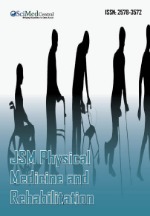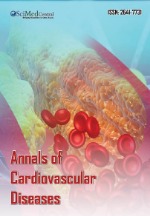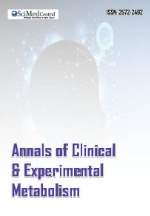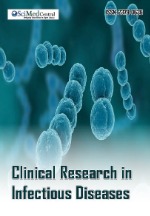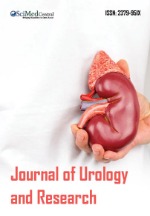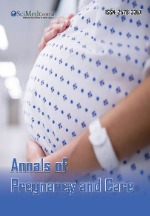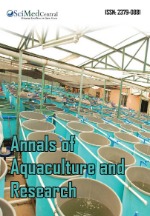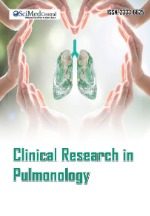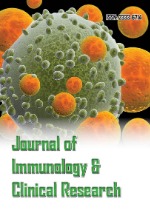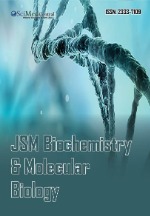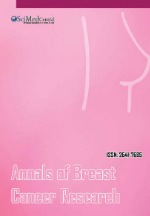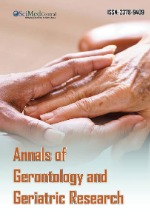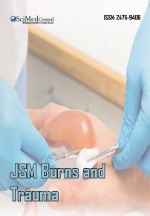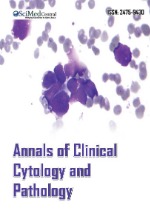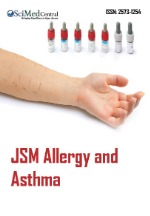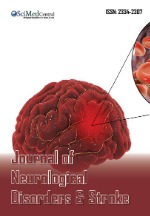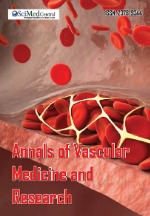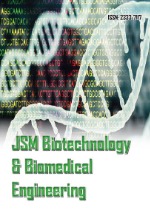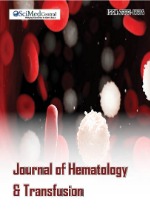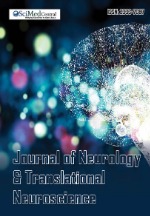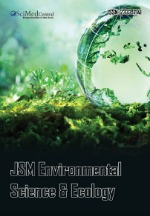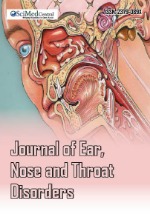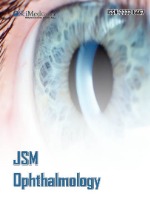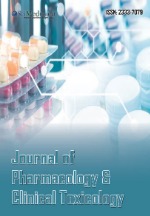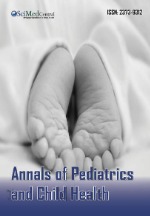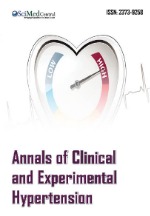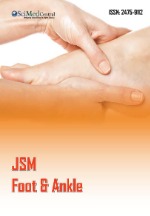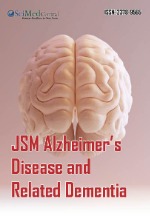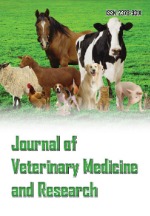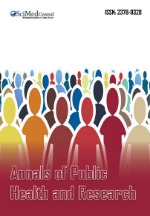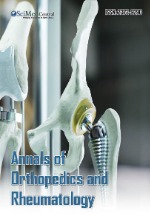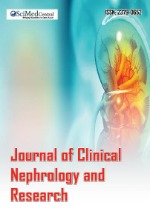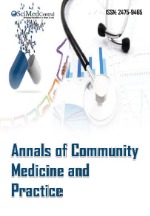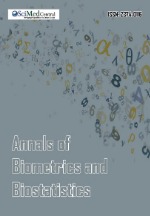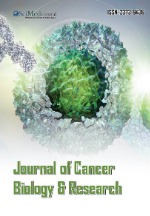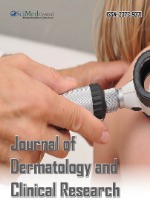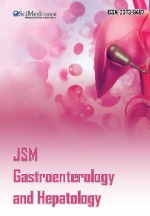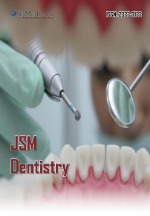Respiratory Bronchiolitis-Associated Interstitial Lung Disease in a 24 Year Old Non-Smoker Female
- 1. Armine Minasyan, Department of Internal Diseases (Pulmonology and Nephrology), Yerevan State Medical University after Mkhitar Heratsi (YSMU), Yerevan, Armenia
- 2. Mikayel Narimanyan, Department of Family Medicine, Yerevan State Medical University after Mkhitar Heratsi (YSMU),Yerevan, Armenia
- 3. Kristian Simonyan, Department of Internal Diseases (Pulmonology and Nephrology), Yerevan State Medical University after Mkhitar Heratsi (YSMU), Yerevan, Armenia
Abstract
Introduction: Respiratory Bronchiolitis-Associated Interstitial Lung Disease (RB-ILD) is a rare form of Idiopathic Interstitial Pneumonia (IIP) and is almost exclusively linked to smoking. Nevertheless, there are few cases reported of RB-ILD among non-smoker patients since 1987, predominantly exposed to second-hand smoke. Since pathophysiologic mechanisms underlying the changes in interstitium are yet unclear, RB-ILD is considered a demonstration of lung parenchymal response to the inhaled smoke.
Case presentation: The case presents a 24 years old non-smoker female with a 6 months history of persistent cough, dyspnea, physical activity limitation, fever and palpitation, diagnosed as RB-ILD on the basis of clinical and subsequent radiological investigation findings.
Discussion: The diagnosis of RB-ILD is based either on histopathological evidence only or combination of clinical manifestations and radiological findings. We compared our data with both ‘’smoker’’ and ‘’non-smoker’’ cases in order to highlight the differences and conclude whether the treatment may solely depend on the combination of clinical and radiological aspects. The available literature considers corticsteroids to be the drugs of choice in this state. The comparison evidenced that corticosteroid-dependant approach in attempt to subside the progress of the condition proves effective, with RB-ILD as diagnosis being the case, even without availability of the histopathological investigation. Conclusion: Dependence on the combination of clinical and radiological findings as basis for choosing the treatment plan, without subsequent histopathological validation, should be approved.
Keywords
• RB-ILD
• Respiratory bronchiolitis
• Small airways disease
• Interstitial lung disease
• Non-smoker
Citation
Minasyan A, Narimanyan M, Simonyan K (2024) Respiratory Bronchiolitis-Associated Interstitial Lung Disease in a 24 Year Old Non-Smoker Female. JSM Clin Case Rep 12(2): 1239.
ABBREVIATIONS
RB-ILD: Respiratory Bronchiolitis Associated Intersitital Lung Disease; RB: Respiratory Bronchiolitis; ILD: Intersitital Lung Disease; RF: Respiratory Failure; TR: Tricuspid Regurgitation; ECG: Electrocardiography; HRCT: High-Resolution CT; GGO: Ground-Glass Opacities; CXR: Chest X-Ray; LAMA: Long-Acting Muscarinic Antagonists; LABA: Long-Acting Beta Agonists; ICS: Inhaled Corticosteroids; IV: Intravenous
INTRODUCTION
Respiratory Bronchiolitis-Associated Interstitial Lung Disease (RB-ILD) is a rare form of Idiopathic Interstitial Pneumonia (IIP) and is almost exclusively linked to smoking, thus often referred to as a ‘’smoking-related ILD’’. Nevertheless, there are few cases reported of RB-ILD among non-smoker patients since 1987, predominantly exposed to second-hand smoke [1,2]. Since the pathophysiologic mechanisms underlying the changes in interstitium are yet unclear, RB-ILD is considered a demonstration of lung parenchymal response to the inhaled smoke [3,4]. The symptom onset age range is from 22 to 70 years with the median of 36-54 years, while the gender predilection is considered to be unclear [1,5-8]. The disease is characterized by persistent cough, exertional dyspnea and wheezing, occurring in a time interval of weeks or months. The clinical evidence of Interstitial Lung Disease is the cornerstone of the differential diagnosis between RB and RB-ILD, since the histologic features often prove indistinguishable. Pathohistologic findings accordant with RB-ILD are as follows: terminal bronchioli and alveoli filled with pigmented macrophages and moderate peribronchial fibrosis [9]. Radiological findings accordant with the diagnosis on chest x-ray present as diffuse retico-nodular opacities and also thickening of the central and peripheral bronchi walls [5,10,11]. Typical High-Resolution CT (HRCT) findings occurrence rate is as follows: central bronchi wall thickening (90%), peripheral bronchi wall thickening (86%), centrilobular nodules (71%) [12], Ground-glass opacities (GGO) (67%) [6], hypoattenuation reflecting air trapping concordant with small airway disease (38%) [12], respectively. In terms of interstitial fibrosis, the occurrence rate varied drastically counting for 20-75% [1,7,11,13], moreover, the classical for interstitial pneumonias sign of “honeycombing” was found only in 0-12% of cases [1,6,7]. Also, a single histologically proven, however without subsequent Chest X-Ray (CXR) and High Resolution CT (HRCT) findings case was reported [13]. Pulmonary function tests depict either mixed or restrictive/obstructive-only pattern, accompanied with modest reduction in DLco [5].
We present a case of RB-ILD in a 24 year old non-smoker woman, exposed to a household second-hand smoke, previously diagnosed as bronchial asthma with progression of the condition over the months, despite the treatment with bronchodilators. Before hospitalisation, management of the condition with IV Dexamethasone, prescribed by emergency services, proved effective for 2 consecutive days, with mild improvement in physical activity limitation and shortness of breath. Nevertheless, these symptoms along with diffuse bilateral wheezing persisted and the next day the patient was admitted to the hospital. The clinical manifestations and subsequent investigations allowed us to correlate this condition to the Interstitial Lung Disease (ILD) with predominant involvement of small airways in the process. For the comparison, another almost similar case of a 54 year old non-smoker female with a histologically proven RB-ILD was chosen (Korea) [2], along with a case of a smoker male (China) [14] .
CASE PRESENTATION
A 24 year old non-smoker, exposed to second-hand smoke exposure of approximately 15 years, female claimed the symptoms such as cough with yellow sputum, dyspnea (shortness of breath) , physical activity limitation and fever of 38.5ºC in June 2023. Previous to admission to our hospital the patient was suspected to have a pneumonia. Initially, when treated with antibiotics, euphylline and dexamethasone the symptoms subsided. However, in August, after the discontinuation of the treatment the condition relapsed, thus, a chest x-ray was performed with following findings: visualisation due to vascular component and peribronchiovascular tissue was increased, roots of the lungs were dilated, no pleural effusion, no infiltrative or focal changes were revealed. The disease persistence led to the decision to perform a chest CT in September with findings as follows: GGOs in middle lobe of the right lung and lingula of the left lung with minimal consolidation, zones of air trapping, mosaic configuration, bronchial wall thickening, trachea and main bronchi lumens were without any occlusion, no pleural effusion or pneumothorax were spotted, in conclusion, changes were accordant with small airways disease. Diagnosed as Bronchial Asthma at this point, a treatment via bronchodilators (LAMA and LABA) was commenced with eventual moderate improvement recorded for several weeks. Nevertheless, in December an acute attack of the symptoms required emergency services intervention: regularly administered IV Dexamethasone proved effective for 2 consecutive days with mild improvement in physical activity limitation and shortness of breath. Nonetheless, these symptoms along with diffuse bilateral wheezing persisted and the patient was admitted to the university clinic. Upon admission the patient complained of cough with sputum of yellow discoloration, dyspnea, physical activity limitation, palpitation and fever of 38ºC. On physical examination by auscultation a diffuse bilateral wheezing was revealed with prolonged expiration and rales, along with accentuation of second heart sound (S2) on the pulmonary area. Oxygen saturation (SpO2) on room air was 88%. HR was 122 beats per minute. The patient mentioned no smoking history, no comorbid diseases or conditions, no constant drug usage. Laboratory findings on the day of admission, 13.12.2023, were as follows: CBC [WBC – 14.25 × 109/L, NEUT – 9.82 × 109/L, LYMPH – 3.46 × 109/L, RBC – 5.3 × 1012/L, HGB - 156 +[G/L], PLT - 580 × 109/L ]. Pulmonary function test (spirometry) results displayed mixed type Respiratory Failure (RF) with both obstruction and restriction. On Electrocardiography (ECG) significant was the presence of P pulmonale in the leads II, III and aVF. On Echocardiography Tricuspid Regurgitation (TR) was recorded. Initial diagnosis was confirmed as Infection related Bronchial Asthma, acute exacerbation, steroid-dependent with Respiratory Failure (RF) of mixed origin [FEV1 = 1.91; FVC =2.72; FEV1/FVC = 70.22; MEF75 = 3.21; MEF50 = 1.98; MEF25= 0.85] and a Cor Pulmonale as a consequence. The patient was started on Moxifloxacin 400 mg x 1 (IV), Dexamethasone 4mg x 1 (IV), Ambroxol 30 mg x 2 po, Omeprazole 20mg x 1 po, Fluticasone propionate/Salmeterol xinafoate (Seretide) 50/250 mkg x 1, Bisoprolol 2.5 mg x 1 po and Oxygenotherapy. The next day, on 14.12.2023, vitals improved with HR being 102 bpm and SpO2 95% on room air, physical assessment data did not vary. Sputum examination revealed yellowish mucoid texture with high viscosity. Microscopic evaluation reported few squamous epithelial cells, WBC and bacteria in great quantity, 5-8 macrophages in the field of view. A non-contrast (native) chest CT was performed reporting following findings: bilateral diffuse Ground-Glass Opacities (GGO) with minimal consolidation zone, segmentar and subsegmentar bronchial wall thickening, no lymphadenopathy, trachea and main bronchi lumens were without any occlusion, no pleural effusion or pneumothorax (Figure 1).
Figure 1: [Armenia Case: Axial CT scans upon admission]. (A), (B): Bilateral diffuse Ground-Glass Opacities (GGO) with minimal consolidation zone, segmentar and subsegmentar bronchial wall thickening, no lymphadenopathy, trachea and main bronchi lumens were without any occlusion, no pleural effusion or pneumothorax. (Date: 14 December 2023).
On 15.12.2023, based on anamnestic, objective, clinical and paraclinical data the case was considered a manifestation of Interstitial Lung Disease (ILD) with predominant involvement of respiratory bronchioles.
To the above-mentioned treatment Methylprednisolone 4mgx1 po was added, while Dexamethasone was removed. Subsequent 3 day management with Moxifloxacin 400 mg x 1 (IV), Ambroxol 30 mg x 2 po, Omeprazole 20mg x 1 po, Fluticasone propionate/Salmeterol xinafoate (Seretide) 50/250 mkg x 2, Metipred 4mg x 1 po and Oxygenotherapy, later, on 18.12.2023, was revised . Methylprednisolone dosage was doubled (8mg x 1 po). Laboratory results came as follows [ WBC 12.82 × 109/L, NEUT 7.24 × 109/L, LYMPH 4.44 × 109/L , RBC 5.04 × 1012/L ,HGB 149 + [G/L], PLT 487 × 109/L , FG 459].Oxygen saturation (SpO2) on room air was 95%. The patient was discharged in the state of absent complains and no pathological signs detected on physical examination. Definitive diagnosis was established: Respiratory Bronchiolitis associated Interstitial Lung Disease (RB-ILD) : acute exacerbation : steroid-dependent : Respiratory Failure (RF) of mixed origin- second degree : Cor Pulmonale.
The outpatient medication referral prescription included the following: Levofloxacin 500 mg x 2 po , Fluticasone propionate/ Salmeterol xinafoate (Seretide) 250/50 mkg x 2 via inhalation (ICS), Methylprednisolone 8mg x 1 po for 3 days , followed by Methylprednisolone 4mg x 1 po.
On a 1 week follow up examination the patient presented with no complains. Auscultation revealed normal vesicular breath sounds, no wheezing. Oxygen saturation (SpO2) on room air - 95% and HR - 98 bpm, respectively.
On a follow up radiological investigation, CT scan, on January 31 2024, the following findings were recorded: bilateral polysegmentar subpleural, focal GGOs combined with adjacent linear fibrotic changes and reticular pattern. On CT scan thickening of bronchial walls was also apparent (Figure 2).
Figure 2: [Armenia Case: Follow up axial CT scans ]. (A), (B), (C), (D): Bilateral polysegmentar subpleural, focal GGOs combined with adjacent linear fibrotic changes and reticular pattern. Thickening of bronchial walls.
DISCUSSION
As previously discussed, RB-ILD is almost exclusively linked to smoking. However, there are few cases of RB-ILD reported in non-smokers, mainly exposed to second-hand smoke, with either clinical, radiological or histopathological findings concordant with the diagnosis. For the comparison, cases of a non-smoker and a smoker were chosen [2,14] (Table1).
Table 1: Comparison table for the Armenia (non-smoker), Korea (second hand smoke exposure) and China (smoker) cases
|
|
Armenia Case |
Korea Case |
China Case |
|
Age |
24 y.o |
54 y.o |
59 y.o |
|
Gender |
F |
F |
M |
|
Occupation |
- |
waitress in a pub |
farmer |
|
Smoker |
- |
- |
+ [15 pack/year] |
|
Exposure to Second-Hand Smoke |
+ |
++ |
+ |
|
Constant Medication Usage |
|
- |
- |
|
Other Medical History |
|
|
|
|
Exposure to Environmental Agents |
|
|
|
|
Clinical Manifestation |
|
|
|
|
Auscultation Findings |
|
|
fine ‘’Velcro’’-like crackles of the lung bases |
|
Spirometry Findings |
|
|
|
|
Initial Management |
|
|
inhalation therapy with budesonide– formoterol inhalation powder |
|
Chest X-Ray (CXR) Findings |
high level visualisation due to vascular component and peribronchiovascular tissue |
|
not obtained |
|
Chest CT Findings |
|
|
both lung fields
|
|
Histopathology Findings |
|
obtained from lingular segment of the left upper lobe
|
obtained from the lower right lung
|
|
Treatment |
[discharged when improved] |
[discharged when improved] |
prednisone (20 mg/day)
[discharged when improved] |
|
Case Reported in [year] |
2024 |
2005 |
2016 |
Abbreviations: F: Female; M: Male; RF: Respiratory Failure; ICS: Inhaled Corticosteroids; GGO: Ground-Glass Opacities; ‘-‘: Negative; ‘+’: Positive; ‘++’: Strongly Positive
Typically, the symptom onset ranges from 22 to 70 years old, while the median is 36 to 54 years old [1,5-8]. The patients chosen for comparison from Armenia, Korea and China were 24, 54 and 59 years old, respectively.
The disease is characterized by persistent cough and exertional dyspnea as the main clinical manifestations. In the smoker’s case from China, non-productive cough and chest discomfort were mentioned [14], while in the case from Korea the patient complained of non-productive cough, dyspnea and mild fever [2]. In our report, from Armenia, the patient presented with cough with yellow discoloration sputum, dyspnea, fever (38.5*C), physical activity limitation and palpitation.
In the case we report, diffuse bilateral wheezing, prolonged expiration and rales were revealed , while in the ‘’Korea case’’, expiratory wheezing was the only finding [2]. The smoker (China case) presented with fine ‘’Velcro’’-like crackles of the lung bases [14].
Pulmonary function tests (spirometry) usually depict either mixed, restrictive or obstructive pattern [5]. The patient from Korea had normal pulmonary function [2], the ‘’smoker’s’’ (China) spirometry results showed mild obstructive abnormality [14], while in the case we report , a mixed type Respiratory Failure (RF) with severe obstruction and restriction was revealed.
In RB-ILD High Resolution CT (HRCT) findings occurrence rate is as follows: central bronchi wall thickening (90%), peripheral bronchi wall thickening (86%), centrilobular nodules (71%) [12], Ground-glass opacities (GGO) (67%) [6], hypoattenuation reflecting air trapping concordant with small airway disease (38%) [12], respectively. In terms of interstitial fibrosis, the occurrence rate varies from 20% to 75% [1,7,11,13], moreover, the classical sign for interstitial pneumonias such as ‘’honeycombing’’ is found only in 0-12% of cases reported [1,6,7]. The following CT findings in ‘’Korea case’’ were reported: evenly distributed, ill-defined centrilobular nodules, GGOs without branching densities spread throughout both lungs [2] (Figure 3).
Figure 3: [Korea Case: Initial coronal and axial CT scans]. (A)- axial plane, (B)- coronal plane: High-resolution CT scans in axial and coronal planes show evenly distributed, ill-defined centrilobular nodules and ground-glass opacities without branching densities
In the case of the smoker (China), chest CT revealed paraseptal emphysema, pulmonary bullae mainly in the upper lungs, diffuse GGOs in both lung fields [14] (Figure 4).
Figure 4: [China Case: Axial CT scan]. A chest computed tomography scan revealed paraseptal emphysema and pulmonary bullae mainly in the upper lungs and diffuse ground glass opacity was present in both lung fields.
We report a case were CT shows ground-glass opacities in middle lobe of the right lung & lingula of the left lung with minimal consolidation (later: diffuse bilateral spread), non-distinct zones of ‘’air-trapping’’, mosaic pattern of lung attenuation, bronchial wall thickening. It is worth mentioning that on neither of these CT images of the compared patients,’’honeycombing’’ appearance was found [2,14].
Typical pathohistologic findings accordant with RB-ILD are as follows: terminal bronchioli and alveoli filled with pigmented macrophages and moderate peribronchial fibrosis [9]. ‘’Korea case’’ biopsy was obtained from lingular segment of the left upper lobe and pathohistological sample presented respiratory bronchiolitis pattern with accumulation of pigment- laden macrophages within the alveolar spaces, mild chronic inflammation of bronchioles, fibrous thickening of the wall of the bronchioles, cuboid cell hyperplasia of the alveolar duct and alveoli adjacent to the bronchioles [2]. In the ‘’China case’’ the biopsy was taken from smoker’s lower right lung and the pathology sample showed presence of brownish pigmented macrophages in the respiratory bronchioles, peribronchiolar inflammation along with fibrosis, alveolar walls infiltrated with collagen and chronic inflammatory cell [14]. Unfortunately, it was not possible to acquire a biopsy sample for our patient.
Smoking cessation and avoidance of smoke overall is considered to be crucial in treating RB-ILD. When pharmacological intervention is required corticosteroids are the drugs of choice. In all of the 3 cases compared in this discussion corticosteroid therapy led to complete improvement in clinical manifestations [2,14]. It was previously suggested that respiratory bronchiolitis should be acknowledged as an uncommon cause of interstitial lung disease, due to noticeable variation in treatment and prognosis [5]. As evidenced from the case we report, management with antibiotics or solely bornchodilators proves either temporarly effective or ineffective, thus, approach focusing on corticosteroid use is advised to be chosen, foreseeing subsequent full amelioration of the condition.
Divergence in short and long-term outcomes of the disease raises suspicions on the nature of the disease being benign [15]. The follow up in Korea and China cases differed substantially in terms of radiological findings [2,14]. In 6 months follow up of Korea case an improvement of ill-defined centrilobular nodules and ground-glass opacities was seen on CT [2] (Figure 5),
Figure 5: [Korea Case: Follow up: axial CT scan]. Follow-up high-resolution CT scan after 6 months, at same level shows improvement of ill-defined centrilobular nodules and ground-glass opacities
while China case in 2 months follow up showed no significant changes in radiological aspect , despite the disappearance of symptoms [14]. In the case we report (Armenia), on the follow up CT scan radiological findings were as follows: bilateral polysegmentar subpleural, focal GGOs combined with adjacent linear fibrotic changes and reticular pattern, bronchial wall thickening.
Conclusion on the comparison of these three cases of RB-ILD occurrence highlights the fact that even though smoking is the primary factor and has a substantial effect on improvement of the condition post-treatment, as radiological evidence suggests, second-hand smoke exposure should not be overlooked. Beneficial effect of elimination of such exposure in our case is presented on the follow up CT scan images (Figure 2).
Also, it should be mentioned that, though complete improvement in clinical manifestations was reached owing to corticosteroid treatment and smoke avoidance, subsequent radiological changes differes with improvement in Armenia and Korea cases in contrast to China case with roughly no positive changes. This fact leads to a thesis that in cases of second-hand smoke exposure tissue level amelioration of the condition, evidenced by radiological findings, is possible to a greater extent.
Since RB-ILD cases reported in non-smoker patients in the literature are limited, there is no approved general approach as such. It is not that the case we report is enough, in terms of incidential occurence, to give universal conclusion on the management of the condition. However, the short-term positive outcome gives basis to consider diagnosing RB-ILD depending on the combination of clinical manifestations and radiological, predominantly CT, findings, without subsequent histopathological validation. This approach, as evidenced by favorable response to corticsteroids, can be used as a ground when deciding on the optimal treatment plan.
REFERENCES
- Moon J, du Bois RM, Colby TV, Hansell DM, Nicholson AG. Clinical significance of respiratory bronchiolitis on open lung biopsy and its relationship to smoking related interstitial lung disease. Thorax. 1999; 54: 1009-1014.
- Woo OH, Yong HS, Oh YW, Lee SY, Kim HK, Kang EY. Respiratory bronchiolitis-associated interstitial lung disease in a nonsmoker: Radiologic and pathologic findings. AJR Am J Roentgenol. 2007; 188: W412-414.
- Hammond EC, Auerbach O, Kirman D, Garfinkel L. Effects of cigarette smoking on dogs. Arch Environ Health. 1970; 21: 740-753.
- Weiss W. Cigarette smoking and diffuse pulmonary fibrosis. Am Rev Respir Dis. 1969; 99: 67-72.
- Myers JL, Veal CF Jr, Shin MS, Katzenstein AL. Respiratory bronchiolitis causing interstitial lung disease. A clinicopathologic study of six cases. Am Rev Respir Dis. 1987; 135: 880-884.
- Ryu JH, Myers JL, Capizzi SA, Douglas WW, Vassallo R, Decker PA. Desquamative interstitial pneumonia and respiratory bronchiolitis- associated interstitial lung disease. Chest. 2005; 127: 178-184.
- 7.Portnoy J, Veraldi KL, Schwarz MI, Cool CD, Curran-Everett D, Cherniack RM, et al. Respiratory bronchiolitis-interstitial lung disease: Long-term outcome. Chest. 2007; 131: 664-671.
- Wells AU, Nicholson AG, Hansell DM. Challenges in pulmonary fibrosis. 4: Smoking-induced diffuse interstitial lung diseases. Thorax. 2007; 62: 904-910.
- Niewoehner DE, Kleinerman J, Rice DB. Pathologic changes in the peripheral airways of young cigarette smokers. N Engl J Med. 1974; 291: 755-758.
- Yousem SA, Colby TV, Gaensler EA. Respiratory bronchiolitis- associated interstitial lung disease and its relationship to desquamative interstitial pneumonia. Mayo Clin Proc. 1989; 64: 1373-1380.
- Heyneman LE, Ward S, Lynch DA, Remy-Jardin M, Johkoh T, Müller NL. Respiratory bronchiolitis, respiratory bronchiolitis-associated interstitial lung disease, and desquamative interstitial pneumonia: Different entities or part of the spectrum of the same disease process? AJR Am J Roentgenol. 1999; 173: 1617-1622.
- Park JS, Brown KK, Tuder RM, Hale VA, King TE Jr, Lynch DA. Respiratory bronchiolitis-associated interstitial lung disease: Radiologic features with clinical and pathologic correlation. J Comput Assist Tomogr. 2002; 26: 13-20.
- Holt RM, Schmidt RA, Godwin JD, Raghu G. High resolution CT in respiratory bronchiolitis-associated interstitial lung disease. J Comput Assist Tomogr. 1993; 17: 46-50.
- Zhou Y, He Z, Bai J, Zhong X. Respiratory bronchiolitis-associated interstitial lung disease with obvious paraseptal emphysema. Respirol Case Rep. 2016; 4: e00198.
- Sieminska A, Kuziemski K. Respiratory bronchiolitis-interstitial lung disease. Orphanet J Rare Dis. 2014; 9: 106.
![[Armenia Case: Axial CT scans upon admission]. (A), (B): Bilateral diffuse Ground-Glass Opacities (GGO) with minimal consolidation zone, segmentar and subsegmentar bronchial wall thickening, no lymphadenopathy, trachea and main bronchi lumens were without any occlusion, no pleural effusion or pneumothorax. (Date: 14 December 2023).](https://www.jscimedcentral.com/public/assets/images/uploads/image-1722668426-1.PNG)
![[Armenia Case: Follow up axial CT scans ]. (A), (B), (C), (D): Bilateral polysegmentar subpleural, focal GGOs combined with adjacent linear fibrotic changes and reticular pattern. Thickening of bronchial walls.](https://www.jscimedcentral.com/public/assets/images/uploads/image-1722668438-1.PNG)
![[Korea Case: Initial coronal and axial CT scans]. (A)- axial plane, (B)- coronal plane: High-resolution CT scans in axial and coronal planes show evenly distributed, ill-defined centrilobular nodules and ground-glass opacities without branching densities](https://www.jscimedcentral.com/public/assets/images/uploads/image-1722668450-1.PNG)
![[China Case: Axial CT scan]. A chest computed tomography scan revealed paraseptal emphysema and pulmonary bullae mainly in the upper lungs and diffuse ground glass opacity was present in both lung fields.](https://www.jscimedcentral.com/public/assets/images/uploads/image-1722668475-1.PNG)
![[Korea Case: Follow up: axial CT scan]. Follow-up high-resolution CT scan after 6 months, at same level shows improvement of ill-defined centrilobular nodules and ground-glass opacities](https://www.jscimedcentral.com/public/assets/images/uploads/image-1722668503-1.PNG)


